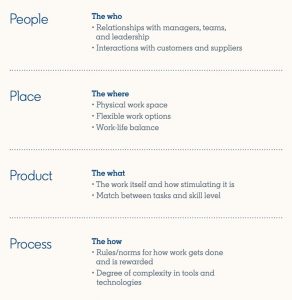Why Your Business Needs Both Content Management & Digital Asset Management

Thanks to the rise of companies like Amazon and Netflix, consumers expect flawless digital experiences at the click of a mouse. However, most companies don’t have the clout, savvy, or business know how to scale. DAM and CMS work together to provide seamless experiences that scale.
Digital asset management systems (DAM) are becoming vital to success. Content management (CMS) has become a nightmare, requiring expert assistance or software. Your digital asset management systems and content management are both the key to your company productivity.
Forty percent of consumers are turned off by poorly written content.
About 30 percent get frustrated with bad design or awkward interfaces. And three in five of the consumers say these issues have to do with a brand. It is essential to keep track of and follow consumer trends that will reveal what current thoughts are on CMS and DAM.
Personalization is key to better brand appeal with clients and customers. More than 50 percent of consumers say they are more likely to buy from a brand that personalizes its message to them. Non-personalized marketing campaigns see lower response rates.
But for mid-sized businesses, offering a perfect experience to every customer, every time, is a real challenge.
These companies don’t have the same marketing resources as their multi-billion dollar peers. Additionally, founders and employees at mid-sized organizations often wear many hats, making it difficult and time-consuming to deliver personalized experiences consistently.
Luckily, mid-sized companies can scale content creation and delivery while still saving time and money. Investing in content management systems (CMS) and digital asset management (DAM) is a must.
Content management systems developed alongside the internet.
Maybe you are a new business blogger, but for those who have been in business for many years — a CMS is critical. Consider one early example — Blogger, a first adapter of providing a CMS service; this blog-publishing service debuted in 1999.
CMS offers users a system to help them create, edit, organize and publish content on the web.
Today, companies utilizing CMS can centralize the management and publishing of all content across channels, which helps streamline workflows. CMS also enables companies to access and deploy digital content simultaneously across platforms, and gauge the performance of their content in real-time.
To access the right content at the right time, though, marketers need to couple their CMS with digital asset management software.
Coupling helps companies quickly find and retrieve content, such as photos, videos, and logos, and then publish that content and track its performance.
If you’ve ever used Google Drive to store and then post a video or share a file with a friend, you’ve used and shared digital asset management software. You will want a digital assets management system for your business.
Some great examples of more substantial business or enterprise digital asset management systems look to:
- Adobe Experience Manager Assets
- Byuder
- Canto Cloudinary
- Stylelabs
- Widen
- Brandfolder
A few examples of popular content management systems would be:
- WordPress
- Joomla
- Drupal
- Magento (for ecommerce stores)
- Squarespace Wix
Here are three ways DAM and CMS work together to provide seamless experiences that scale.
-
Increase productivity.
At firms that don’t use CMS, making changes to a website is difficult and time-consuming. Marketing department employees most likely can’t make these changes on their own. Request assistance from colleagues in the IT department and there’s no telling how long it might take.
We all rely on IT and devs to handle all these requests. The simple fact remains, the IT teams are slammed with much more urgent priorities.
With the right CMS, marketers can quickly implement website changes on their own, without relying on IT.
As a result, marketers can push out new content and experiences much faster. A small digital optimization won’t cut it anymore. Reducing reliance on IT departments isn’t the only way to increase productivity.
Consider how much work it currently takes to locate and reuse digital assets. Over 80 percent of companies say the most significant challenge they face when utilizing digital assets is simply tracking down that content.
Watch blogging information by Morgan Quinn, a digital content manager. Quinn reports that brands that employ DAM solutions locate digital assets five times more quickly than their peers.
-
Leverage AI to work smarter.
Artificial intelligence can enhance the capabilities of DAM solutions, thereby giving mid-sized firms the ability to find and deliver content to large consumer segments quickly.
“Smart tagging,” for example, uses machine learning and artificial intelligence to automatically tag videos and photos.
With smart tagging, marketers don’t have to spend hours trying to organize content and come up with the best descriptions for them. Simply building AI into their DAM solution can provide a solution for them.
Consider the story of Silicon Labs, a semiconductor equipment manufacturer with about $800 million in annual revenue. Silicon Labs deployed Adobe Experience Manager to tag and track 5,000 technical documents. This project also included the tagging and tracking of images and photos, their management, and the delivery of experiences.
It used to take Silicon Labs a week to make changes to its website since marketers often had to wait for the IT department. Now, changes take just 20 minutes.
Adopting a company-wide DAM solution and CMS to manage all your content may seem daunting, but the benefit for smaller firms is immense. Increasing efficiency and reducing time to publish marketing research and give critical insights in content provides new and exciting experiences. Silicon Labs is a prime example here, with its marketing team consisting of only three people.
-
Save money.
Many mid-sized companies create and store content in silos.
A campaign offer will differ slightly depending on whether consumers will view it on desktop, mobile, or Facebook. With the right CMS and DAM solutions, companies can centralize content creation and make updates across all channels simultaneously. Manually updating for each channel is no longer an option in this climate of entire business optimizations.
Using both systems together can boost a company’s bottom line, as can what’s referred to as “asset reuse” when assets are reused across multiple engagements.
Research shows that companies that don’t use DAM solutions spend over $44,000 more to manage assets. Conversely, when properly employed, DAM solutions can save companies close to $189,000 in just five years.
Just look at Motorola. Before adopting a DAM solution, employees at the telecommunications company spent 20 minutes, on average, tracking down, converting, and disseminating each image they used. Employing a DAM solution to quickly locate these images saved the company $600,000.
Today’s customers want efficient, personalized, digital experiences. Brands of all sizes can deliver. They just need a CMS — and they need to give a DAM.
The post Why Your Business Needs Both Content Management & Digital Asset Management appeared first on ReadWrite.
(30)
Report Post








